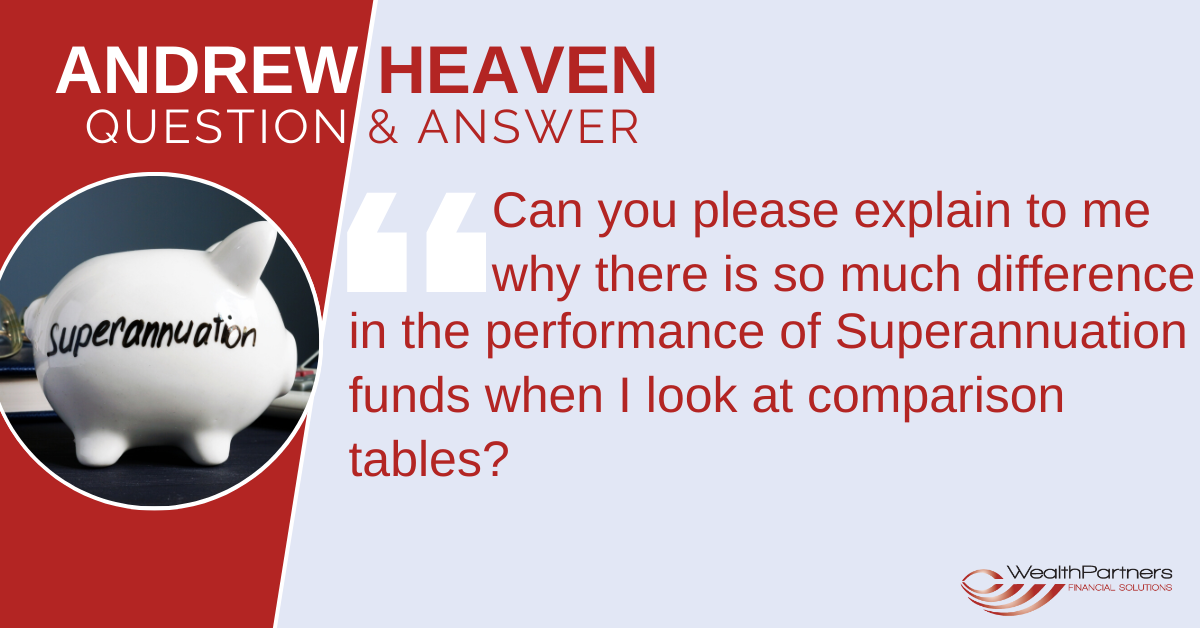Q: Can you please explain to me why there is so much difference in the performance of Superannuation funds when I look at comparison tables?
A: The primary driver of investment performance is asset allocation and the quality of investment selection.
Asset allocation refers to how the funds are invested. Typically Superannuation fund managers will invest in a range of assets such as shares, property, infrastructure, fixed interest and cash. Quality Investment selection is reflected in the skill of the manager to buy assets that grow in value and generate a rate of return.
Trying to compare funds on a like for like basis is not as easy as it should be. You need to ensure that you are comparing funds with a similar asset allocation. This is not made easy by performance tables that bundle funds together as “diversified” or “balanced” funds when there is a marked difference in their asset allocation.
If one Balanced fund has 60% exposure to growth assets and another one has an 85% exposure to growth assets, it should be fairly obvious which one will outperform when share markets fall. However this reporting can be further clouded if the assets within the fund are not priced at fair market value.
My concern for Super fund investors is that they know where their funds are invested and what risks they are taking to generate a rate of return. Past investment performance is a retrospective view of a fund and does not represent the capital risks you take on board to generate a return.
Make sure you check a funds exposure to growth assets and compare between funds with a similar exposure. Do not rely on the fund name or its ranking to give you the answer.
Once you are comparing on a like for like basis, then compare the relative performance, considering fees, the volatility and the capital risks taken to generate the returns. Do not rely on the Super fund or performance tables to do this for you.


